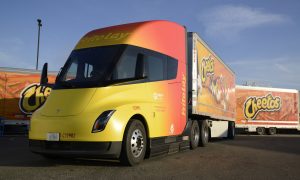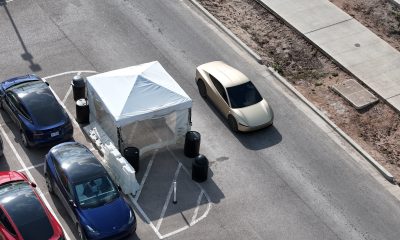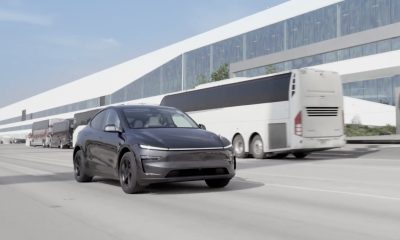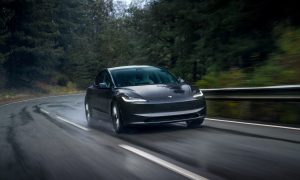Investor's Corner
Tesla increases Q2 production by 20% but falls short of deliveries
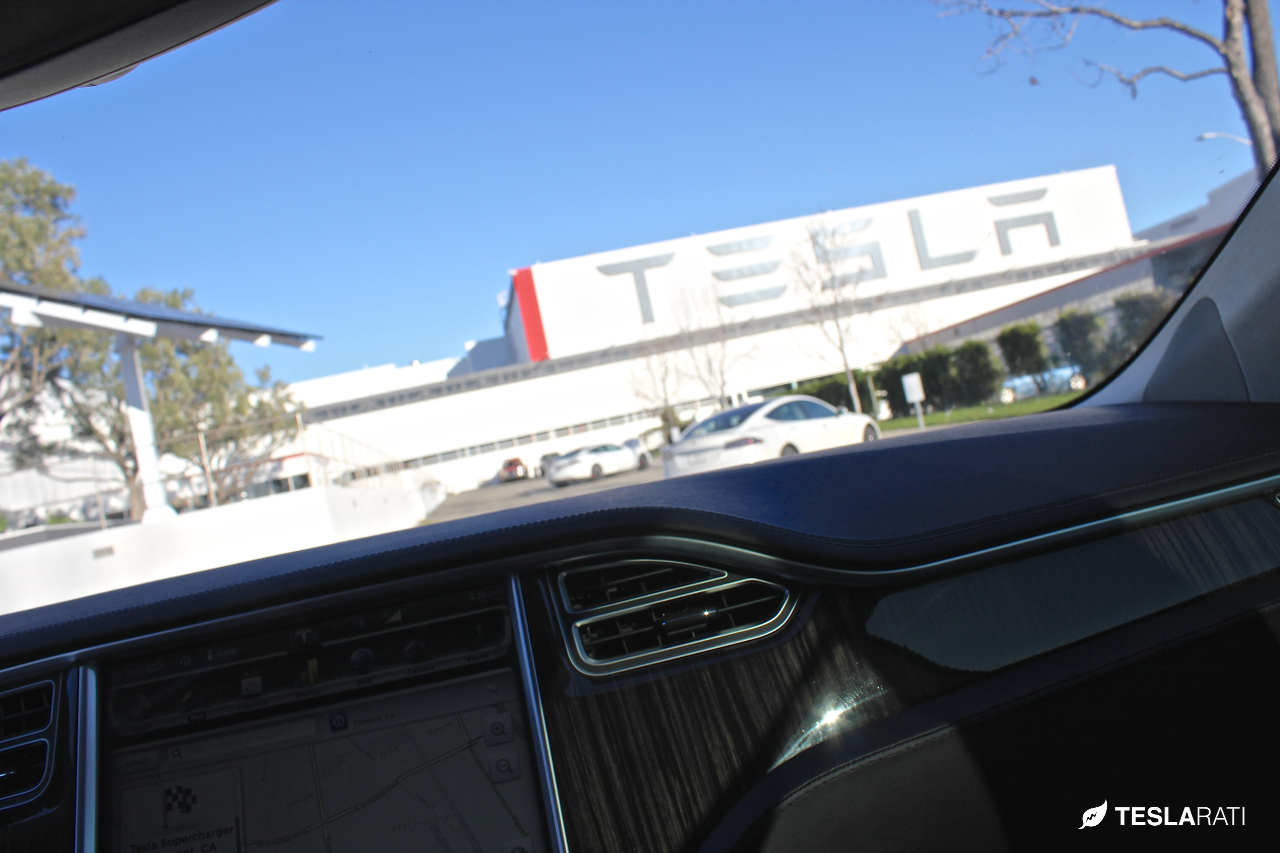
Tesla issued its Q2 production and delivery numbers, indicating that the company produced 20 percent more cars this quarter than the previous however fell short in delivering the vehicles to customers.
The Silicon Valley based electric car company reported 18,345 vehicles produced in Q2 or roughly just under 2,000 vehicles per week, and delivered 14,370 vehicles though guidance was set at 17,000 vehicles. Tesla attributed the fact that “Tesla Q2 deliveries were lower than anticipated” to having “5,150 customer-ordered vehicles [..] still in transit, a much higher number than the 2,615 vehicles in transit to customers at the end of Q1.”
Tesla added that half it saw a huge production ramp towards the end of Q2 resulting in half of the quarter’s production occurring in the final four weeks. Model S continues to lead in terms of deliveries consisting of 9,745 units delivered versus 4,625 Model X.
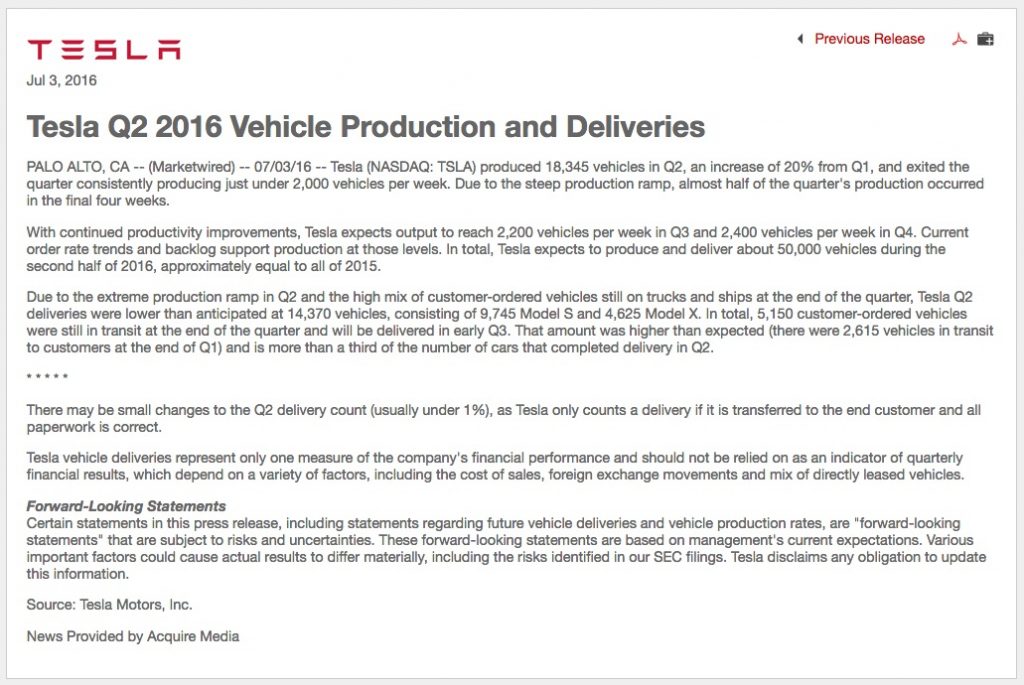
Tesla Q2 2016 Vehicle Production and Deliveries Release [Source: Tesla Investor Relations]
As far as total deliveries for the full year 2016, “Tesla expects to produce and deliver about 50,000 vehicles during the second half of 2016”, which means it will not be able to hit the low end of previous guidance of “80,000 to 90,000 new vehicles in 2016” as the projected 2016 yearly number for 2016 now stands at 79,000.
Tesla Market Action
During the past week $TSLA stock seems to have safely discarded the major bad news about the Model S driver killed while using Autopilot. While the press was flooded with negative articles about the accident (I counted an average of 2-4 articles per day in the Wall Street Journal and on Bloomberg), and the news ended up being reported 2 days in a row in the national news broadcast of all major networks, Wall Street traders shrugged the bad news off completely. While the stock had a temporary drop to 206 in after hours extended trading on Thursday when the news came up on the wire, $TSLA stock shot back with a vengeance to the $216 level on Friday, giving traders one of the best weeks of the year with a whopping 15% weekly gain.
What will $TSLA stock do when the market reopens on Tuesday after the 4th of July holiday? If we look at the response after the Q1 deliveries were reported on April 4, most news outlets reported that Tesla Missed Its Q1 Delivery Targets. Wall Street traders did not care much then, trading the stock up for 3 sessions to an all time high of $266 after the news. In that case, Tesla had reiterated the 80 to 90 thousand deliveries for the year, which may have softened the bad news of total quarterly deliveries.
This is a quick look to today’s headlines in response to the Q2 delivery numbers.
- The Verge: Tesla falls short of delivery estimates in Q2 despite ramping production
- NBC News: Tesla cranks out 20% more cars in Q2, but struggles to deliver them
- USA Today: Tesla deliveries in Q2 fall short of estimates
- ABC News: Tesla Vehicle Deliveries Slip in Q2
Technical indicators were in a really good spot at market close on Friday: 4-days of positive Heikin Ashi charts, MACD positive, MACD averages “pinching”, indication the possible start of a longer breakout on the upside. But the possible bullish breakout could be stopped by the market reaction to what is effectively a “miss” of guidance for the year, more than the smaller numbers for the quarter.
Will Wall Street traders shrug off the Q2 negative results like they did with Q1?
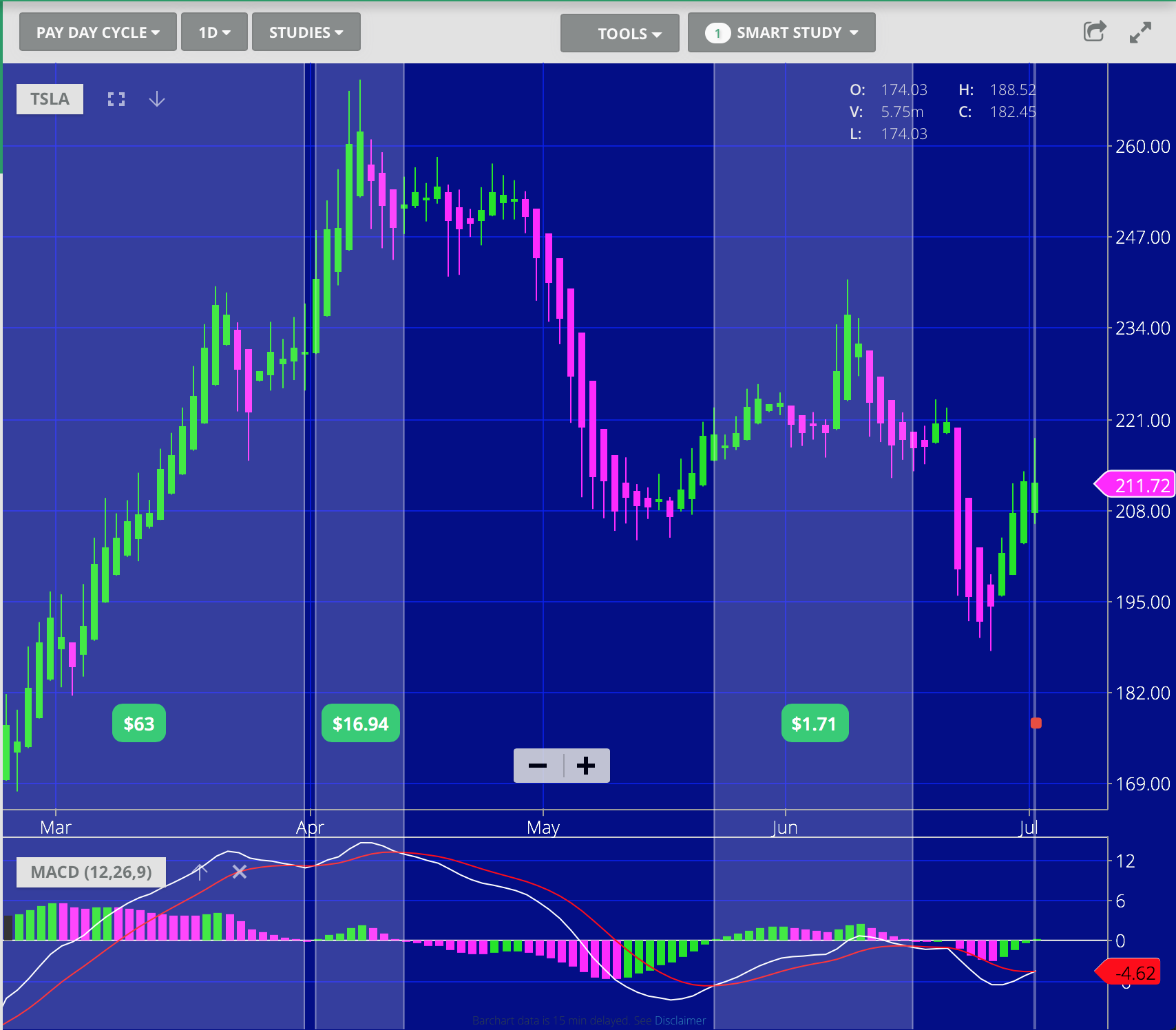
Source: Wall Street I/O
Investor's Corner
Tesla “best positioned” for Trump tariffs among automakers: analyst
Ives has a price target of $315 per share for the electric vehicle maker.
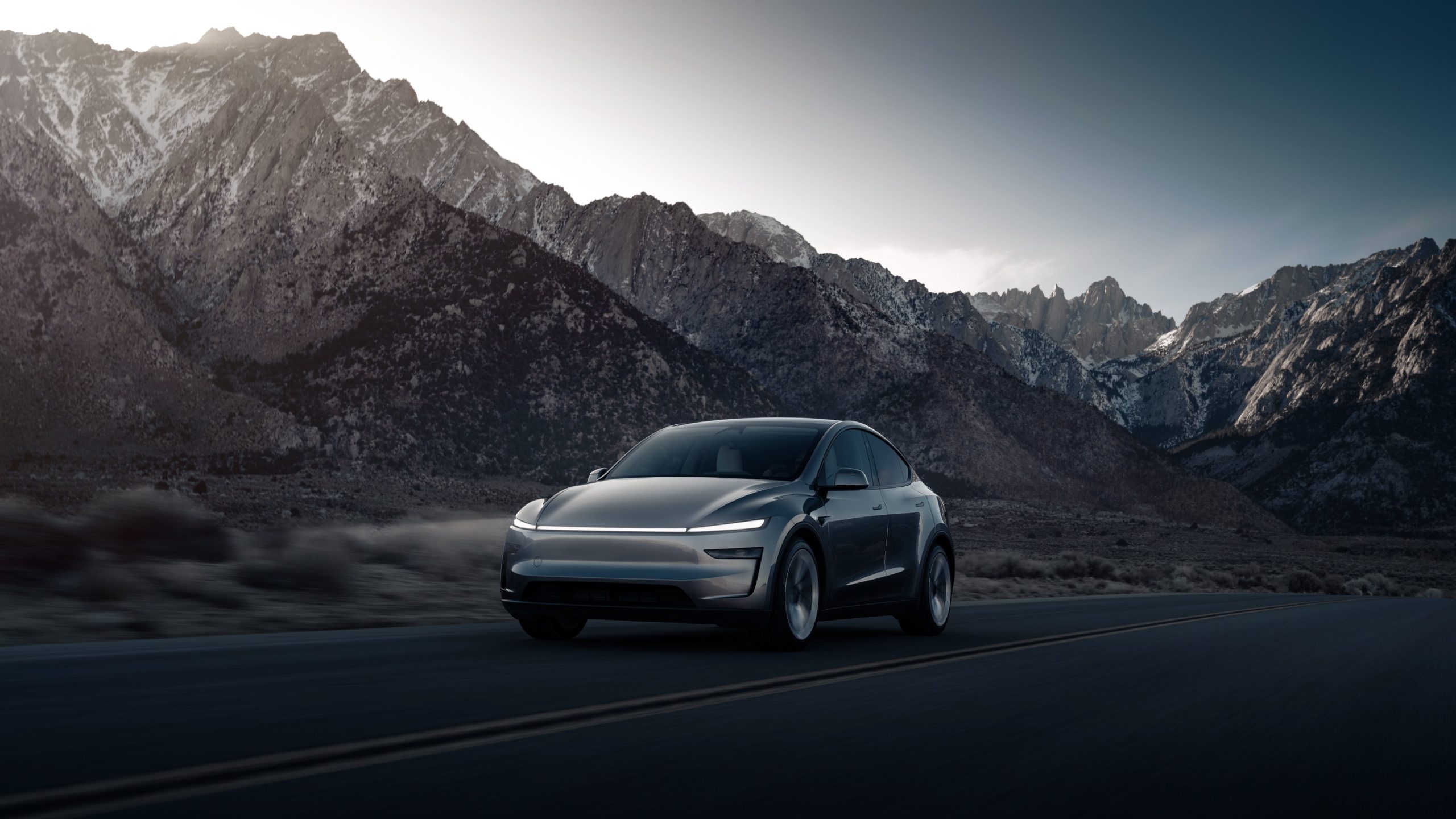
Wedbush analyst Dan Ives recently shared his thoughts about Tesla (NASDAQ:TSLA) amidst the Trump administration’s tariffs. As per Ives, Tesla is best-positioned relative to its rivals when it comes to the ongoing tariff issue.
Ives has a price target of $315 per share for the electric vehicle maker.
Best Positioned
During an interview with Yahoo Finance, the segment’s hosts asked about his thoughts on Tesla, especially considering Musk’s work with the Trump administration. Musk has previously stated that the effects of tariffs on Tesla are significant due to parts that are imported from abroad.
“When it comes to the tariff issue, they are actually best positioned relative to the Detroit Big Three and others and obviously foreign automakers. Still impacted, Musk has talked about that, in terms of just auto parts,” Ives stated.
China and Musk
Ives also stated that ultimately, a big factor for Tesla in the coming months may be the Chinese market’s reactions to its tariff war. He also noted that the next few quarters will be pivotal for Tesla considering the brand damage that Elon Musk has incited due to his politics and work with the Trump administration.
“When it comes to Tesla, I think the worry is where does retaliatory look like in China, in terms of buying domestic. I think that’s something that’s a play. And they have a pivotal six months head, in terms of what everything we see in Austin, autonomous, and the buildout.
“But the brand issues that Musk self-inflicted is dealing with in terms of demand destruction in Europe and the US. And that’s why this is a key few quarters ahead for Tesla and also for Musk to make, in my opinion, the right decision to take a step back from the administration,” Ives noted.
Investor's Corner
Tesla negativity “priced into the stock at its current levels:” CFRA analyst
The CFRA analyst has given Tesla a price target of $360 per share.
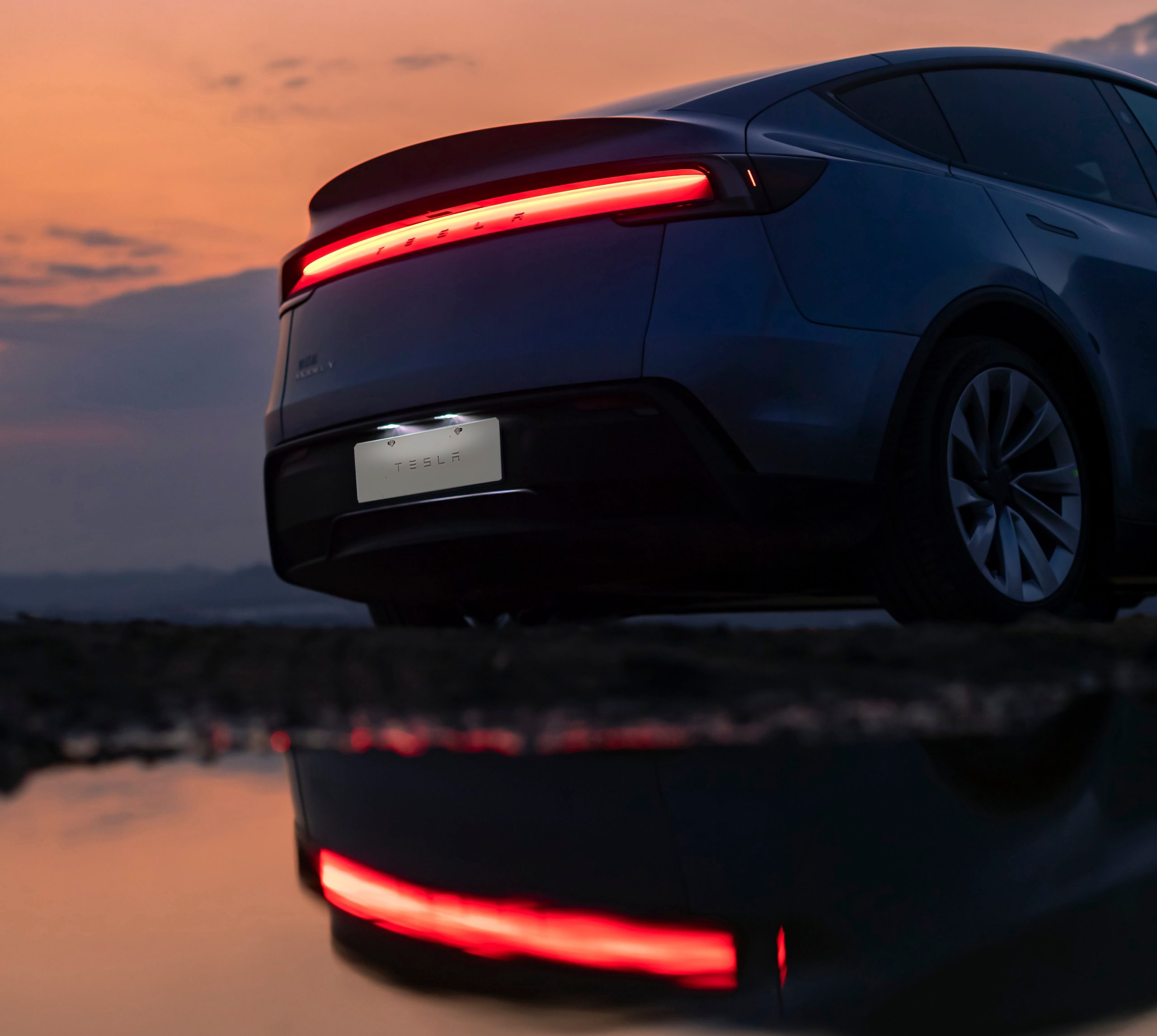
In recent comments to the Schwab Network, CFRA analyst Garrett Nelson stated that a lot of the “negative sentiment towards Tesla (NASDAQ:TSLA) is priced into the stock at its current levels.”
The CFRA analyst has given Tesla a price target of $360 per share.
Q1 A Low Point in Sales
The CFRA analyst stated that Tesla’s auto sales likely bottomed last quarter, as noted in an Insider Monkey report. This was, Nelson noted, due to Q1 typically being the “weakest quarter for automakers.” He also highlighted that all four of Tesla’s vehicle factories across the globe were idled in the first quarter.
While Nelson highlighted the company’s changeover to the new Model Y as a factor in Q1, he also acknowledged the effects of CEO Elon Musk’s politics. The analyst noted that while Tesla lost customers due to Musk’s political opinions, the electric vehicle maker has also gained some new customers in the process.
CFRA’s Optimistic Stance
Nelson also highlighted that Tesla’s battery storage business has been growing steadily over the years, ending its second-best quarter in Q1 2025. The analyst noted that Tesla Energy has higher margins than the company’s electric vehicle business, and Tesla itself has a very strong balance sheet.
The CFRA analyst also predicted that Tesla could gain market share in the United States because it has less exposure to the Trump administration’s tariffs. Teslas are the most American-made vehicles in the country, so the Trump tariffs’ effects on the company will likely be less notable compared to other automakers that produce their cars abroad.
Investor's Corner
Tesla average transaction prices (ATP) rise in March 2025: Cox Automotive
Tesla Model Y and Model 3 saw an increase in their average transaction price (ATP) in March 2025.
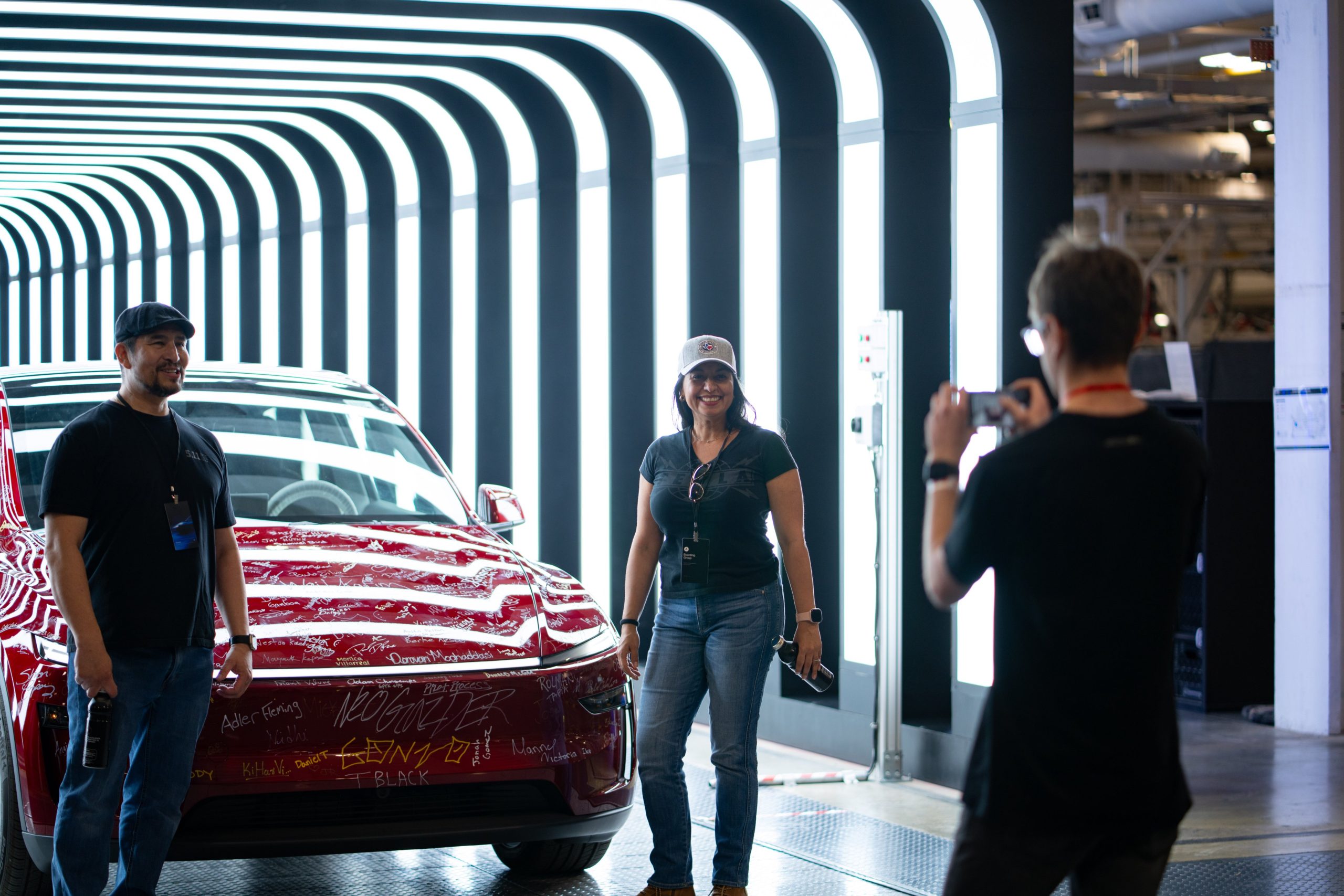
Data recently released from Cox Automotive’s Kelley Blue Book has revealed that electric vehicles such as the Tesla Model Y and Model 3 saw an increase in their average transaction price (ATP) in March 2025.
Cox Automotive’s findings were shared in a press release.
March 2025 EV ATPs
As noted by Cox, new electric vehicle prices in March were estimated to be $59,205, a 7% increase year-over-year. In February, new EV prices had an ATP of $57,015. The average transaction price for electric vehicles was 24.7% higher than the overall auto industry ATP of $47,462.
As per Cox, “Compared to the overall industry ATP ($47,462), EV ATPs in March were higher by nearly 25% as the gap between new ICE and new EV grows wider. EV incentives continued to range far above the industry average. In March, the average incentive package for an EV was 13.3% of ATP, down from the revised 14.3% in February.”

Tesla ATPs in Focus
While Tesla saw challenges in the first quarter due to its factories’ changeover to the new Model Y, the company’s ATPs last month were estimated at $54,582, a year-over-year increase of 3.5% and a month-over-month increase of 4.5%. A potential factor in this could be the rollout of the Tesla Model Y Launch Series, a fully loaded, limited-edition variant of the revamped all-electric crossover that costs just under $60,000.
This increase, Cox noted, was evident in Tesla’s two best-selling vehicles, the Model 3 sedan and the Model Y crossover, the best-selling car globally in 2023 and 2024. “ATPs for Tesla’s two core models – Model 3 and Model Y – were higher month over month and year over year in March,” Cox wrote.
Cox’s Other Findings
Beyond electric vehicles, Cox also estimated that new vehicle ATPs held steady month-over-month and year-over-year in March at $47,462, down slightly from the revised-lower ATP of $47,577 in February. Sales incentives in March were flat compared to February at 7% of ATP, though they are 5% higher than 2024, when incentives were equal to 6.7% of ATP.
Estimates also suggest that new vehicle sales in March topped 1.59 million units, the best volume month in almost four years. This was likely due to consumers purchasing cars before the Trump administration’s tariffs took effect. As per Erin Keating, an executive analyst at Cox, all things are pointing to higher vehicle prices this summer.
“All signs point to higher prices this summer, as existing ‘pre-tariff’ inventory is sold down to be eventually replaced with ‘tariffed’ inventory. How high prices rise for consumers is still very much to be determined, as each automaker will handle the price puzzle differently. Should the White House posture hold, our team is expecting new vehicles directly impacted by the 25% tariff to see price increases in the range of 10-15%,” Keating stated.
-
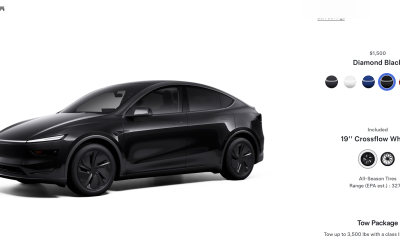
 News2 weeks ago
News2 weeks agoTesla rolls out new, more affordable trim of the Model Y Juniper in U.S.
-
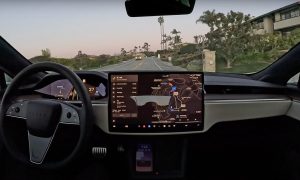
 News2 weeks ago
News2 weeks agoTesla expands Early Access Program (EAP) for early Full Self-Driving testing
-
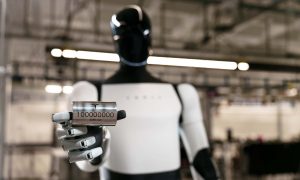
 News2 weeks ago
News2 weeks agoTesla celebrates key milestone for 4680 battery cell production cost
-
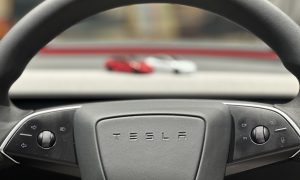
 Investor's Corner2 weeks ago
Investor's Corner2 weeks ago“Nothing Magnificent about Tesla (TSLA),” claims Jim Cramer
-

 News1 week ago
News1 week agoI took a Tesla new Model Y Demo Drive – Here’s what I learned
-
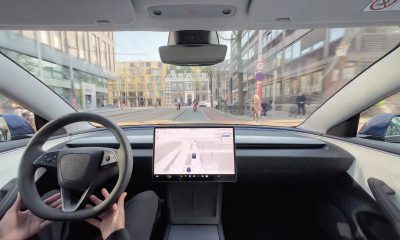
 News2 weeks ago
News2 weeks agoTesla Europe shares FSD test video weeks ahead of launch target
-
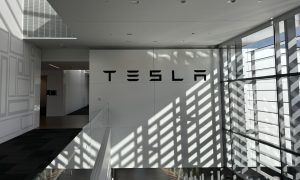
 News2 weeks ago
News2 weeks agoThis Tesla executive is leaving the company after over 12 years
-
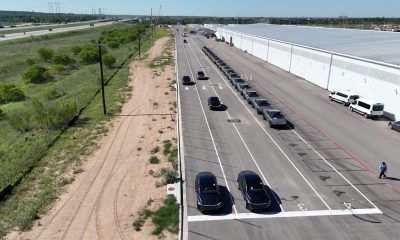
 News2 weeks ago
News2 weeks agoTesla’s Giga Texas vehicles now drive themselves to outbound lot



